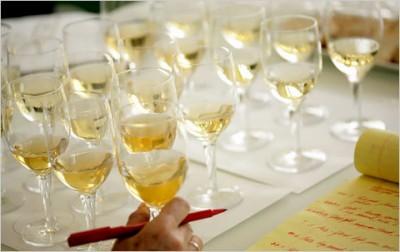
When in conversation about wine, often “body” is mentioned. If you go to a wine tasting, noting the body of a wine is common practice. But what is meant by body when referring to a wine? Well, simply put, it’s how a wine feels in your mouth. When you take a sip of wine and roll it around on your tongue to open up the aromas and get the flavor profile, how that wine feels in your mouth determines the body of the wine. Light-bodied, medium-bodied and full-bodied are typical descriptors. Think of it like milk. You’ve got skim, 2% and whole milk. How do those three feel in your mouth? Whole milk has a fuller mouthfeel than skim. The same applies to wine. Not that the wine has less fat, but that lighter bodied wines tend to have less alcohol. Therefore, the alcohol in wine has a direct correlation to the body of a wine.
Alcohol content in wine can be broken down into four components: ethanol, glycerol, methyl alcohol and fusel oils.
- Ethanol accounts for about 7 – 15% of a wine’s alcohol content. It is the primary output of fermentation. As you know, wine is made from fermented grapes. The juice from these fermented grapes becomes the wine. The ethanol content is what determines the aroma and the bouquet of that wine.
- Glycerol is sweet alcohol that is found in wines with higher concentrations of sugar. Dessert wines are a perfect example of a high glycerol wine. The sweeter the wine the higher the glycerol content, but it usually doesn’t exceed 1.2% of the total alcohol content.
- Methyl alcohol plays a minor role in the total alcohol content of wine. Accounting for less than a percent in standard wines. However, with wines made from pectin fruits, the percentage of alcohol in wine is much higher. High pectin fruit wines include wines made from blackberries, apricots, apples and peaches. Typically pectin residue will remain in the juice and is seen as a wine fault. A neutralizing enzyme can be added to clear the pectin residue.
- Fusel oils are believed to be the culprits in wine and other alcoholic beverages that cause hangovers. They are, in fact, toxic compounds to humans, but only account for one tenth of a percent of wine alcohol content. The reason they cause hangovers is that they slow down the breakdown of ethanol thereby prolonging how long it stays in the body.
One thing people often confuse for alcohol content is legs. They tend to judge a wine’s quality by how many legs or tears run down the side of a wine glass after swirling the wine. This is a misconception and alludes to nothing more than a physical reaction of the water molecules in the wine joining together as the alcohol evaporates. The alcohol decreases the surface tension of the wine, which is naturally very resilient in water. One exception to this is sweet wines. Because there is so much residual sugar in dessert wines, the presence of legs is due to the viscosity of the liquid.
So how much alcohol is in wine?
Well, that depends on the wine. Table wines, by U.S. regulation, must be less than 14% alcohol per volume. Table wines are typically blends and says “table wine” on the label. Wine varietals can be much higher than that but usually cap out at about 15%. Keep in mind though that 15% is very high. 14% is high, really. Wines that high in alcohol content are made to be drunk by themselves, unless you are having a very hearty meal. Some Zinfandels can be up to 16% as can other wines produced in hot climates. Old world table wines are much less, around 8.5% – 12%. These wines are made more for accompanying meals.
Sparkling wines like Champagne average about 8 – 12 % and fortified wines, wines to which brandy is added, can exceed 22%. Fortified wines are Port, Sherry, Madeira, Marsala and some dessert wines.
You can also tell a wine’s body by the alcohol content.
7.5% – 10.5% for a wine with light body.
10.5% – 12.5% in a medium body wine.
12.5%+ in full body wines.
If you want to know the content of alcohol in wine, every bottle must show it on its label. You can usually find it on the back of the bottle.


Speak Your Mind